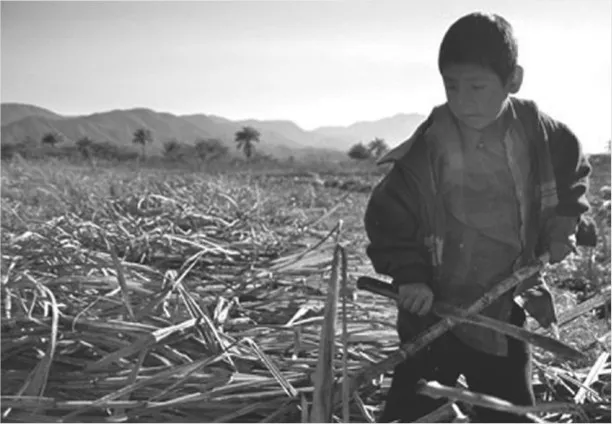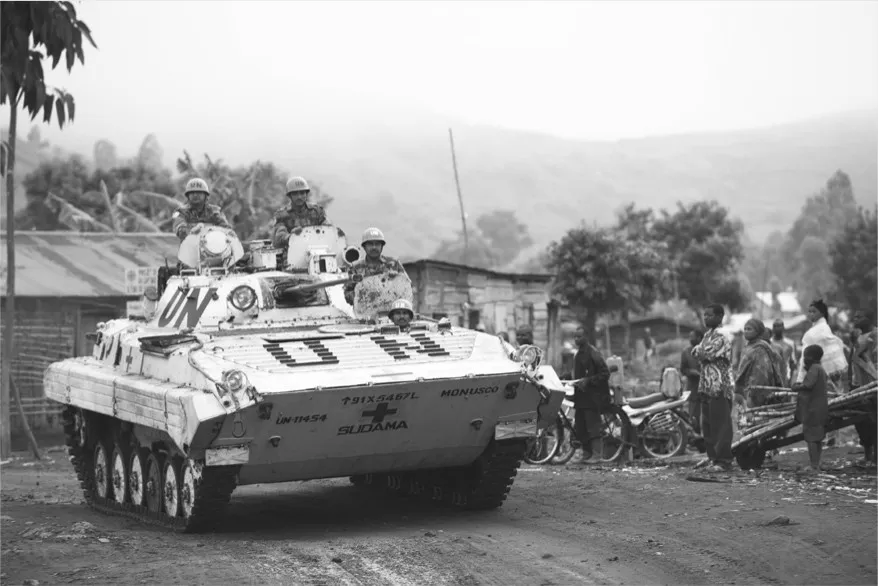
- 552 pages
- English
- ePUB (mobile friendly)
- Available on iOS & Android
eBook - ePub
About this book
This groundbreaking text on globalization provides a comprehensive and enlightening overview of globalization issues and topics. Emphasizing the theory and methods that social scientists employ to study globalization, the text reveals how macro globalization processes impact individual lives—from the spread of scientific discourse to which jobs are more or less likely to be offshored. The author presents a clear image of "the big globalization picture" by skillfully exploring, piece by piece, a myriad of globalization topics, debates, theories, and empirical data. Compelling chapters on theory, global civil society, democracy, cities, religion, institutions (sports, education, and health care), along with three chapters on global challenges, help readers develop a broad understanding of key topics and issues. Throughout the text, the author encourages readers to relate their personal experiences to globalization processes, allowing for a more meaningful and relevant learning experience.
Frequently asked questions
Yes, you can cancel anytime from the Subscription tab in your account settings on the Perlego website. Your subscription will stay active until the end of your current billing period. Learn how to cancel your subscription.
No, books cannot be downloaded as external files, such as PDFs, for use outside of Perlego. However, you can download books within the Perlego app for offline reading on mobile or tablet. Learn more here.
Perlego offers two plans: Essential and Complete
- Essential is ideal for learners and professionals who enjoy exploring a wide range of subjects. Access the Essential Library with 800,000+ trusted titles and best-sellers across business, personal growth, and the humanities. Includes unlimited reading time and Standard Read Aloud voice.
- Complete: Perfect for advanced learners and researchers needing full, unrestricted access. Unlock 1.4M+ books across hundreds of subjects, including academic and specialized titles. The Complete Plan also includes advanced features like Premium Read Aloud and Research Assistant.
We are an online textbook subscription service, where you can get access to an entire online library for less than the price of a single book per month. With over 1 million books across 1000+ topics, we’ve got you covered! Learn more here.
Look out for the read-aloud symbol on your next book to see if you can listen to it. The read-aloud tool reads text aloud for you, highlighting the text as it is being read. You can pause it, speed it up and slow it down. Learn more here.
Yes! You can use the Perlego app on both iOS or Android devices to read anytime, anywhere — even offline. Perfect for commutes or when you’re on the go.
Please note we cannot support devices running on iOS 13 and Android 7 or earlier. Learn more about using the app.
Please note we cannot support devices running on iOS 13 and Android 7 or earlier. Learn more about using the app.
Yes, you can access Globalization by JoAnn Chirico in PDF and/or ePUB format, as well as other popular books in Social Sciences & Sociology. We have over one million books available in our catalogue for you to explore.
Information
1
The World Has Gone Global
Objectives
This overview introduces many basic concepts related to the study of globalization, preparing you for the detailed analysis of globalization in the upcoming chapters. This chapter will help you
• critique the most prominent definitions of globalization and develop and support a definition of globalization;
• evaluate the debates about when globalization began;
• identify globalization forces within and among societies and their effects;
• use a variety of frameworks for studying globalization;
• distinguish among dimensions of globalization and discuss the relationships among them;
• describe the subjective and objective conditions that have facilitated globalization;
• analyze globalization as a continuation of historical thought and events, and recognize new and unique aspects of the contemporary era of globalization; and
• explain how globalization results from human activity and poses a set of constraints for human activity, from local to global levels.
Box 1.1 Consider This: Global Forces




How have global forces influenced the lives and life chances of these children? Work, rather than school, is commonplace in many parts of the world. Children like these—in mines, on farms, in factories, and on the streets of global cities—are working all over the world.
In contrast, you are in college not only to learn about the world but also to get an education that will lead to a good job. How has globalization influenced your ability to go to college, your choice of a major, or your future career plans?
How did global norms that condemn child labor and stress the importance of education bypass these children? Can globalization help them? Is globalization in any way responsible for their plight?
Do children everywhere deserve similar life chances?
Turn on the television or the radio. Pick up a newspaper or a magazine. The likelihood that you will come across a story about either the potential or the peril of globalization is high. Globalization reaches into nearly every dimension of social life and more deeply than we might imagine into each of our lives. You have probably noticed that your clothes are manufactured in many countries in addition to the United States. But they are not manufactured randomly anywhere in the world. Your electronics come from a lot of different places, but where they are manufactured is not random. Global forces influence where your clothing, electronics, and any other of your possessions are made.
Are you a coffee drinker? Where coffee comes from and what it costs are as much a function of globalization as they are of climate and market forces. Feel like eating Ethiopian or Japanese? What if you are looking for a Tai Chi or yoga class to get in shape? If the right cuisine or type of exercise class cannot be found just down the block, there is a recipe or training as close as the nearest television or Internet connection.
In 2007, over 20 million name brand toys manufactured in China with lead-based paint were recalled from countries all over the world. In 2008, tomatoes contaminated by dirty irrigation waters in Mexico sickened and poisoned people in the United States. In 2009, Americans purveyed poisonous peanuts internationally. The toys, tomatoes, and peanuts reminded the world that danger might lurk in even the most mundane items. Each of these is part of the globalization diorama.
Globalization is more complicated than products and produce traveling to and from places all over the world. People, ideas, jobs, money, bacteria, pests, viruses, plants, and animals—nearly everything flows throughout the world. These flows knit people from all over the world into webs of interaction that change how they work, play, and think. Events in one country can have repercussions across the world. Consider these events: How did protests throughout North Africa in January 2011 raise the cost of gasoline in the United States? Why would the earthquake and tsunami in Japan threaten workers’ jobs in the American Midwest? How did the Asian financial crisis impact the Brazilian and Russian steel markets leading to thousands of steel workers in the United States facing layoffs? How does a debt crisis in Europe threaten American jobs? The Islamist movements in the Middle East and the revival of religious fundamentalism in Western societies are also related. A list of globalization impacts could go on endlessly. Ideas, people, products, and money flow through the world connecting people and places with often surprising results.
How does globalization affect your daily life?
Defining Globalization
Globalization is “a promiscuous and unfaithful word” (Eriksen, quoted in O’Hearn 2009, 498). It has become a buzzword with many definitions that often lack analytical specificity. The concept stretches across the social sciences—sociology, anthropology, geography, political science, economics, law, and religious studies all study globalization. The concept is fluid and slippery, sometimes used broadly as a substitute for international and multinational that do not mean the same thing. Sometimes, it is used narrowly to mean the spread of production processes across countries or increases in trade among nations.
Box 1.2 Consider This: Is the Globe Becoming a Single Place, a Group?
Belonging to a group means accepting the formal and informal rules of membership. Groups of societies, such as the UN, NATO, and the EU, have rules for belonging. Globalization has forged interdependence among societies that requires at least a minimal degree of adherence to some basic rules that establish some order. Enticing some societies to go along with the global community—to join with the group—is a tricky and often risky business.
China, Iran, Iraq, Sudan, and North Korea are among recent cases in which diplomats have tried cajoling, coaxing, and at times threatening nations to do what the majority of the global community considers “the right thing.” Sanctions and constructive engagement are two ways that societies try to get other societies to change. With sanctions, a country might refuse to trade with another. Using constructive engagement, societies continue to interact, hoping that as the country becomes more integrated into the global community, it will change. Whether to exercise sanctions or constructive engagement is among the most consequential decisions faced in international relations.
Russia and China were reluctant to use the threats of sanctions against Iran that the United States advocated (Landler and Levy 2009). Within the United States, General J. Scott Gration, who favors more engagement with Sudan, is criticized by others who want much stricter sanctions (Thompson 2009). The United States expressed surprise and dismay that South Korea offered a package of incentives for North Korea to give up its nuclear weapons (Landler 2009). The United States angered many of its allies and lost favor in world opinion when it attacked Iraq for its refusals to fully cooperate with the International Atomic Energy Agency (IAEA).
What should other countries do when a country refuses to uphold global norms concerning such important issues as human rights or non-proliferation of nuclear weapons? Should they treat their allies differently than countries with which they have poor relations?
There is a substantively important reason for the confusion. There is genuine disagreement about dating globalization. Some theorists maintain that globalization is a centuries-old phenomenon of increasing interactions gradually involving more people in more parts of the world. They argue that periods of intense interaction among societies have occurred before, such as the trade and travel along the Silk Road routes or at the turn of the 20th century, when people, ideas, and technologies flowed East to West and back. Many of the ideas that are diffusing globally originated and began to spread centuries ago. Other theorists argue that the contemporary period is significantly different from the past. For the first time, every person and every society on earth is caught in the same webs of worldwide interaction. They differentiate global from international activity. Economic, cultural, political, and social systems encircle the globe independent and apart from international relations. Contemporary social life has grown beyond its societal moorings, these theorists claim; therefore, globalization is a unique and new set of processes.
Substantive difficulties defining and dating globalization arise because we are in the eye of the storm, in the midst of the process. Nevertheless, there are important areas of agreement. The discussions in this textbook bridge some of these differences by not only highlighting difference but also emphasizing areas of agreement in the approaches to globalization and substantive areas where different analyses reach similar conclusions.
A broad and inclusive definition of globalization is a set of processes through which the world is becoming “a single place” (Robertson and Chirico 1985, 220). There are two important concepts in this definition: becoming and a single place. A single place does not mean that the globe is becoming one big city or nation. It means that people are increasingly connected in many ways so that they feel as though they are a part of a single place. There is more of a consciousness of the world as a whole and how parts impinge on the whole. Events in one part of the world impact people living far away with a greater immediacy than ever before. Financial transactions on the New York, London, and Tokyo Stock Exchanges can happen from anywhere in the world, and what happens in one exchange impacts the others. High school and college students make friends through social media and video games who live across oceans. There are few products that are made from materials and parts derived solely from one country. Increasingly, there are more common experiences across cultures. As in other eras, technology has helped to spur these changes. Manufacturing and management can move nearly anywhere in the world due to ease of transport and communication. Media and entertainment from news outlets, music, movies, and books help to spread ideas globally. The capabilities of the Internet and social media have accelerated the technological push.
We also have more shared experiences in institutions such as sports, education, and medicine. Institutions globally are adopting similar, standardized models. The medical model developed primarily in Western societies is spreading to the East. Meanwhile, in the West, medicine has absorbed traditional therapies, such as acupuncture, that originated in Eastern societies. People can even have very similar shopping and dining experiences in diverse cities such as Tokyo, Nairobi, London, Rio de Janeiro, and New York. Children in schools—where they are available—progress through a grade-level system studying knowledge neatly divided into disciplines to obtain diplomas certifying their competence.
Box 1.3 A Closer Look: UN Peacekeepers

The activity of UN peacekeeping forces has accelerated since the the end of Cold War. Increased ethnic violence, more willingness of the UN to get involved, and an increased sense of responsibility for basic rights of people all over he world contribute. While the level of warfare has decreased, ethnic and sectarian conflict continues. In May 2012, heavy gunfights between government and insurgent groups in the Democratic Republic of Congo pushed residents of Bunagana to the Ugandan border. UN peacekeepers tried to minimize conflict by securing the town.
The connections across different parts of the world require coordination and cooperation among societies and individuals to avoid excessive or violent conflict and intolerable chaos. This is what is meant by becoming. People must negotiate some basic rights and responsibilities that everyone has toward everyone else—individual, organization, or government—to reduce conflict. To some extent, that is happening. There are international institutions such as the United Nations (UN), World Trade Organization (WTO), International Monetary Fund (IMF), International Atomic Energy Agency (IAEA), and World Bank that were created after WWII to negotiate and regulate various aspects of international relations. However, they are controversial. They reflect power differentials that conflict with developing global norms concerning equality among nations. Also, they are all state-centered institutions. As the globe is becoming a single place connected by systems that transcend state boundaries, corporations, non-governmental organizations, and other non-state actors have significant power to shape social life.
The globe “becoming ‘a single place’” may be thought of as the globe becoming a social structure similar in nature to a group. A group is a specific social structure, not just a collection of people. The following are characteristics of a group:
• Boundaries: Boundaries define criteria for membership. For example, new countries adopt constitutions strikingly similar to ones of established countries. People are subject to similar norms, such as gender equality, worker safety, environmental laws, and age at marriage. To be considered a legitimate government, countries are expected to abide by norms such as those regarding human rights, environmental protection, and nuclear proliferation. Minimal standards of good citizenship are being developed for corporations with respect to their social responsibility. Science is acknowledged near universally as a legitimate form of knowledge, although it clashes, for many people, with religion. Boundaries do not mean that all countries, all organizations, and all people will be the same, just that there are minimal sets of expectations to which they should adhere to remain in good standing.
• Statuses and roles: Statuses and roles define positions in the world and the expectations associated with them. People, ranging from world leaders to children, and entities such as corporations, organizations, and states are increasingly subject to expectations common across the world. There are standards of accountability for leaders and expectations for children, such as a minimum number of years of school and minimum age at marriage. Countries have many expectations of one another, such as those based on whether a country is a donor or a borrower in the global financial hierarchy.
• Values: Groups have some basic values that are shared. Universal agreement on each value is not necessary. Values, such as environmentalism, are spreading globally. Not every country embraces it to the same degree, and not all individuals within nations subscribe to it. Nearly all societies recognize the rights to freedom of religion, speech, assembly, elections, and the press. Even more importantly, many countries abide by them.
Box 1.4 Consider This: Negotiating Privacy vs. Free Speech Globally
Values of privacy and free speech are among the most important in nearly ...
Table of contents
- Cover Page
- Halftitle
- Dedication
- Title
- Copyright
- Contents
- Introduction
- 1 The World Has Gone Global
- 2 Studying Globalization
- 3 Setting the Stage: Foundations Globalization
- 4 Making the Global Economy
- 5 Forging a Global Civil Society
- 6 Who Gets What, When, and How: Global Governance
- 7 Globalizing Political Culture and State Governance
- 8 Trends and Transitions in Democracy
- 9 Globalizing Culture: Change and Continuity
- 10 Globalization and Everyday Life
- 11 Religion: Conflict and Compromise
- 12 Transborder Threats to Human Well-Being: Inequality and Migration
- 13 Transborder Threats to Human Well-Being: Violent Conflict and Crime
- 14 Transborder Threats to Human Well-Being: Food and the Environment
- 15 Global Trajectories: The City
- Notes
- References
- Photo Credits
- Index
- Advertisement